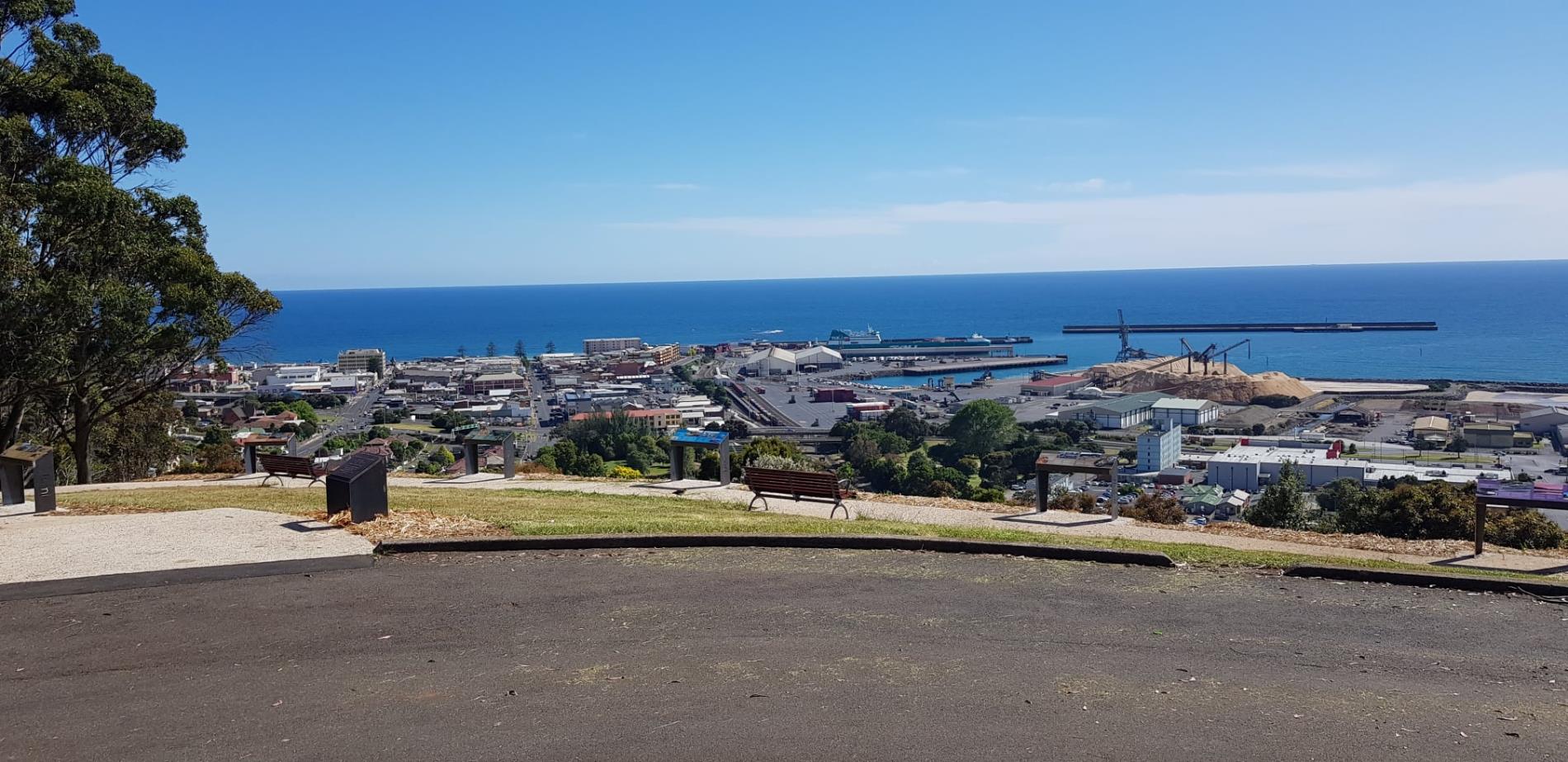Fact File
Nestled on Tasmania’s north-west coast, Burnie is a vibrant city that blends its industrial heritage with a creative, modern spirit. Originally established as Emu Bay Settlement in 1827 by surveyor Henry Hellyer, the town was renamed Burnie in 1840 after William Burnie, a key figure in the region’s early development. Today, Burnie is a regional hub and a fantastic base for exploring Tasmania’s northwest.
Quick Facts
Location
Burnie is situated on the north-west coast of Tasmania, nestled along the shores of Bass Strait. As Tasmania's most westerly city, it acts as a vital regional hub for the surrounding towns, providing an essential gateway to the diverse attractions of the region.
- Coordinates: Latitude: 41°S, Longitude: 145°E
- Burnie Postcode 7320 (CBD, urban suburbs) (7321 rural areas)
Getting Here
Burnie is well-connected, making it an excellent base for exploring the northwest, including Cradle Mountain, Tarkine, and the West Coast.
- By Road: A1 Bass Highway, 1.5 hours from Launceston
- By Air: BWT Burnie Wynyard Airport, 20 minutes from CBD.
- By Sea: Port of Burnie (cruise ships), 40 min from Devonport - Spirit of Tasmania terminal.
Climate
Spring and summer (September to March) offer the best weather and wildlife experiences.
- Mild oceanic: cool wet winters, warm sunny summers
- Average Rainfall: 970mm per year
Things to See and Do
-
Burnie Park & Oldaker Waterfall: Beautiful gardens and scenic walking paths
-
Burnie Coastal Trail: Stunning beaches and little penguin sightings
-
Fernglade Reserve: A haven for native wildlife
-
Guide Falls: Easily accessible waterfalls set in lush forest
-
Emu Valley Rhododendron Garden: One of the largest gardens of its kind in the Southern Hemisphere
Did You Know? Fun Facts
- Burnie was once home to one of Australia’s largest pulp and paper mills.
- A former Tioxide plant coloured the sea rust-red with iron salts.
- Rich red volcanic soils support local agriculture.
- Little penguins nest right beside the CBD.
- The city has a vibrant arts scene and hosts regular festivals and cultural events.
- Emu Valley Rhododendron Garden is one of the largest in the Southern Hemisphere.
